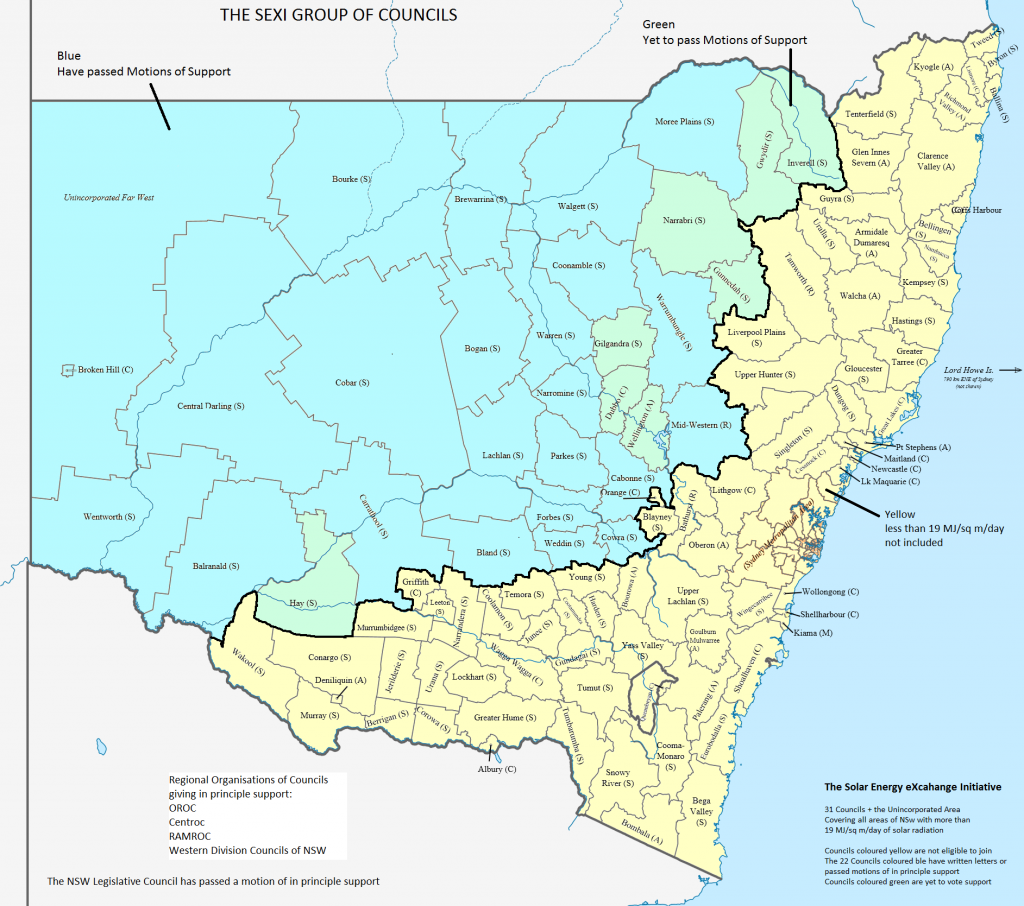A local government initiative in NSW is proposing the development of six solar projects, to showcase and test a variety of photovoltaic and concentrating solar thermal technologies.
The initiative, spearheaded by a group of 32 NSW councils accounting for two-thirds of the state’s area, would see each participant install around half a megawatt of PV in various sites around their electorate.
The voluntary alliance, called the Solar Energy eXchange Initiative – or the SEXI proposal, hopes to attract federal government funding of up to $200 million over five to six years for the six solar projects, worth about $30 million each.
The first of these projects would focus on solar PV, with each local council installing approximately 0.4 MW of PV panels at a number of sites, and monitoring sunshine levels, cloud formations, and electricity production of the panels.
The project would use of a range of panel types, to “proof test” and compare their performances. The collection of real time data from up to 100 sites across inland NSW would then assist the planning of future solar energy projects, as well as projects like the CSIRO’s solar intermittency / cloud mapping enterprises.
 Data would be published on the internet, and freely available to all researchers (and the general public).
Data would be published on the internet, and freely available to all researchers (and the general public).
Beyond the distributed PV project, the remaining five SEXI proposal projects focus on concentrating solar thermal, with plans to build five medium-scale CST plants of 3-6MW each, using a range of solar and storage technologies.
The plants would be large enough to meet the electricity demand of a typical country town of two to five thousand people – according to the rule of thumb for baseload power of 1000 people per MW.
According to the SEXI group, while occasional excess electricity would be exported to the grid, there would be no need to significantly extend or strengthen the grid, as the plants would be sized to fit within the grid.
The CSP plants would also be located at the loads, producing power in a paddock adjacent to the town, to be consumed in the town.
For the five country towns selected, the local council would own and operate the local solar thermal power plant.
The projects would also function as demonstration plants for a future solar energy industry in western NSW, that would supply electricity to Sydney and Melbourne.
“Having a number of small demonstration plants in inland NSW, sized for and operating to supply a country town, built in a range of technologies, will give confidence to the proponents of larger plants,” a SEXI group media release notes.
“They will have ‘real world’ results to rely on, not just computer simulations. The engineers can be confident that potential problems have been identified and managed on other sites.”
To date 24 Councils have passed formal motions of support for the SEX proposal; with about 60 per cent of NSW signing on. Four Regional Organisations of Councils have given support, as has the NSW parliament.
Image via SEXI
© 2014 Solar Choice Pty Ltd